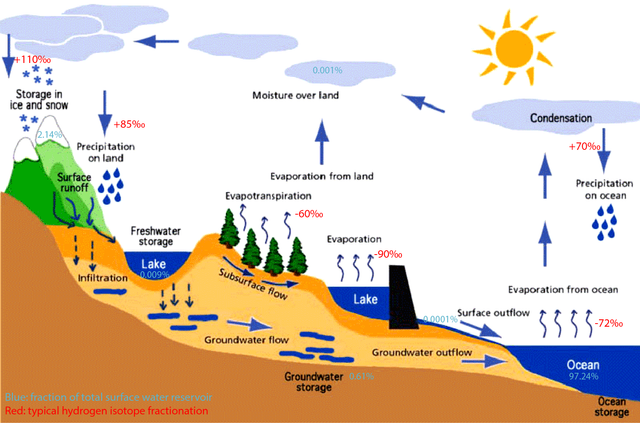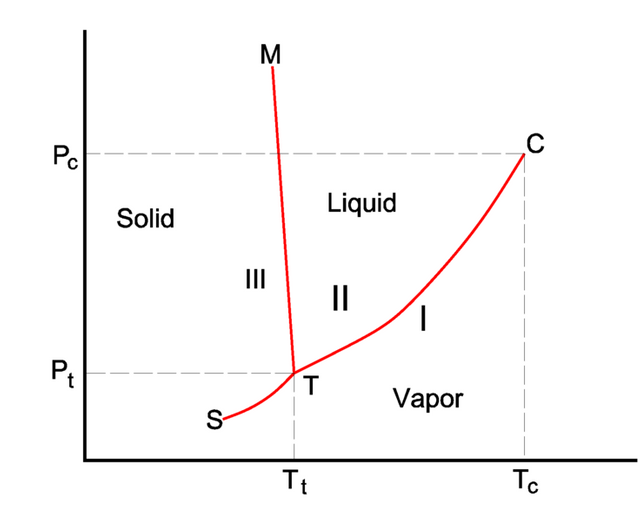 Spinning wheel
(License: Public Domain]: Unsplash
Spinning wheel
(License: Public Domain]: Unsplash Introduction
Hey! The image to your right is not a lottery spinning wheel. The hydrologic cycle is rapidly accelerating before us. Well, maybe not yet as fast as this image may seem to portray but this is essentially a certainty. The implication of this is that some of us will get richer while the others get poorer. The currency upon which this variation in wealth is based however proves that too much of wealth is sometimes bad. This is not to go without saying that poverty is always bad! We shall be discussing the causes and consequences of a rapidly accelerating hydrologic cycle on our world today. But first, let’s have a quick overview of this interesting cyclic process of water on earth and why it is recently happening faster than it ought to.
The hydrologic cycle
The hydrologic cycle (also water cycle) is a term used to describe the continuous circulation of water around the earth as it undergoes series of temperature phase changes. The part of the earth where this exchange and transfer of water in its different forms occurs include the hydrosphere, atmosphere, biosphere and lithosphere, while the physical processes responsible involve evaporation, condensation, precipitation, infiltration, surface runoff and subsurface flow.
.png) The hydrologic cycle
(License: CC BY-SA 4.0, Author: Sunson08]: Wikicommons
The hydrologic cycle
(License: CC BY-SA 4.0, Author: Sunson08]: Wikicommons Evaporation occurs as the heat from the sun’s radiation warms water found in open spaces such as rivers, oceans, streams and lakes. This interaction forces the water molecules found at the surface to gain kinetic energy and escape as vapour into the atmosphere. Humidity and wind speed are other factors that can influence evaporation. Evaporation also occurs as water escapes through the stomata of plants; a process known as Transpiration (giving rise to the collective description – evapotranspiration). Ice and snow can also translate directly from their solid form to vapour via a process known as Sublimation; although this is more common at areas of low air pressure and temperature such as on mountain tops.
Upon attaining high altitude in the troposphere, the cooling and mixing of air masses causes the water vapour to cool significantly, condensing and forming concentrated water droplets which we see as clouds. They are held together by an updraft (upward moving air) and are carried about by forces of atmospheric circulation such as wind, some over to dry lands; this movement is the reason why desert areas can also experience rainfall. Once the weight of the clouds can no longer be upheld by the updraft, they fall back to the earth surface as Precipitation (rain, snow or sleet). Water molecules are purified by evaporation, hence the reason why rainfall is a fresh water source.
On the earth surface, some of the precipitation falls directly back to the oceans, some are intercepted by vegetation, others flow as runoff or infiltrate into the subsurface where they are either used by roots of trees and plants or percolate to the water table and join the groundwater where they eventually flow into the oceans, completing the cycle.
The hydrologic cycle, as simple as it may seem, is a quite complex process occurring in nature. You can read more about it here.
WHY AND HOW IS THE H20 CYCLE ACCELERATING? – The Clausius-Clapeyron relation
 PT diagram for illustration of Clausius-Clapeyron relation
(License: CC BY-SA 3.0, Author: P.wormer]: Wikicommons
PT diagram for illustration of Clausius-Clapeyron relation
(License: CC BY-SA 3.0, Author: P.wormer]: Wikicommons The processes involved in the hydrologic cycle occur simultaneously at a steady rate over the years. These processes are influenced by physical factors such as temperature, humidity and pressure. An accelerated hydrologic cycle is just one of the many effects of rising global temperature (global warming) in recent years.
The dependence of vapour pressure on temperature makes it that warm air is able to hold more water vapour than cold air. This is proven by the Clausius-Clapeyron relation that shows that the vapour pressure of any substance follows a non-linear increase with temperature. Temperatures have risen by around 0.8°C since the past century, this rise in global temperature have been said to boost the moisture-retaining capacity of air by more than 4%. The result of this is obviously an increase in the rate of evaporation as more water molecules can escape from ocean surfaces into the air as water vapour and held by the warm atmosphere.
A group of researchers at the Lawrence Livermore National Laboratory also found that yearly variations in the salinity of ocean surfaces since 1950 is an indication that the earth’s hydrologic cycle has experienced an increasing speed rate of about 8 percent per each degree of warming that the earth is subjected to. This rate has been projected to increase by 16-24% in the year 2100.
The Evaporation Paradox… Could this all be a faux?
 Evaporation pan.
(License: CC BY-SA 3.0, Author: Bidgee]: Wikicommons
Evaporation pan.
(License: CC BY-SA 3.0, Author: Bidgee]: Wikicommons Though the Clausius-Clapeyron relationship has been used to ascertain the relationship between increasing air temperature and increase in evaporation rate, a series of field measurements carried out using pan evaporimeters over a period of 40 years – spanning from 1950 to 1990 – in certain regions from around the world showed a decreasing rate of evaporation in those regions. (Pan evaporation is the measurement of potential evaporation or evaporation demand of a particular region, the values of which can then be converted by certain calculations to give the actual estimate of evapotranspiration in that region.)
Considering existing evidence of increasing global temperature, the results of this pan evaporation experiments contradict the Clausius-Clapeyron principle in what is known as The Evaporation Paradox. If the interpretation of the pan evaporimeters’ measurements is anything to go by, it simply implies that everything we know about using evaporation rate to prove that there is an accelerating hydrologic cycle could easily pass for a faux; afterall, a decreasing evaporation rate as shown by these interpreations would indicate that there is no global temperature rise of any sorts which is what would have been chiefly responsible for the acceleration.
This wouldn’t be much of a big deal if the contradiction arising from this development is just, at best, a disprove of global warming; however, the fact that this also challenged the works of Rudolf Clausius and Benoit Clapeyron– two of the central founders of thermodynamics – made it an interesting point of view to many scientists. Could it be that one of the oldest principles in the science of thermodynamics had always been faulty? Or could it be that these instruments were just not properly designed? These were questions that needed answers, and, as always, science would always find a way.
Clausius and Clapeyron were not wrong… Neither were the instruments.
In 1998, the evaporation paradox was clarified by Wilfried Brutsaer, a professor in Cornell University with the department of Civil and Environmental Engineering and Marc Palange, a professor with the Geology and Environmental Engineering department at Johns Hopkins University. They deciphered that the decrease in evaporation rate (as shown by the pan evaporation experiments) was, in fact, an evidence of increase in evaporation rate from the dry land environment that surrounded the pan.
Basically, the pan evaporimeters result had been all along misinterpreted by previous researchers because they did not take into account the influence of the presence(or absence ) of moisture in the surrounding environment where the pan evaporimeters were stationed. For instance, placing a pan evaporimeter in a hot, dry environment (like a desert) would cause the water in the pan to evaporate more quickly than when the same plan is placed in cool, wet environment (such as rain forest). This was further clarified by simulating the same experiments in a land environment that boasts of high moisture content, and, as you would expect, the results were complementary this time around. Thus, regional-land surface moisture must be considered when trying to interprete the measurements of a pan evaporimeter.
A similar explanation to this paradox was recently given by a group of scientists at the Xinjiang Institute of Ecology and Geography where aerodynamics influence was taken into consideration. They observed that near-surface windspeed contributed to decline of pan evaporation while a combination of vapour pressure deficit and wind speed contributed to increase in pan evaporation.
The rich-getting-richer and the poor-getting-poorer… Maybe we would all get poorer?
The major impact of the accelerating hydrologic cycle, as indicated by various climatic models, is that wet regions will become wetter and dry regions will become drier.
Since warm air can hold more water vapour, the consequence of an increasing evaporation rate is even more rainfall in areas of high altitude and in near-equatorial regions – the Rich getting richer. In contrast, subtropical regions such as the Sahel regions of Africa will have their soil subjected to more moisture loss to evaporation, resulting in drier soils and more severe drought conditions in response to increasing evaporation rate – the Poor getting poorer.
However the first part of this metaphor – the rich-getting-richer... – may not always apply in this case of accelerating water cycle and here’s the obvious reason; as long as evaporation increases in coastal communities, rainstorms would keep intensifying, leading to major problems like extreme flooding water erosion in these areas. So thinking about it again… maybe we would all get poorer! And well, it's already happening before our very eyes.
REFERENCES
The hydrologic cycle. Retrieved on 8th June, 2018
Water cycle. Retrieved on 8th June, 2018
Global water cycle is revving up. Retrieved on 8th June, 2018
Climate change is driving water cycle speed-up. Retrieved on 8th June, 2018
Acceleration of Hydrological Cycle. Retrieved on 10th June, 2018
Researchers solve evaporation paradox. Retrieved on 10th June, 2018
Seager R, Naik N, Vecchi G.A. (2010). Thermodynamic and Dynamic Mechanisms for Large-Scale Changes in the Hydrological Cycle in Response to Global Warming. Journal of Climate. Vol 23, no 17
Brutsaert, W.H., & Parlange, M. (1998). Hydrologic cycle explains the evaporation paradox. Nature, 396, 30-30.
New Explanation for Evaporation Paradox — Latest Results from Pan Evaporation Research in Arid Region of Northwest China. Bulletin of the Chinese Academy of Sciences. Vol.27 No.3 2013.
Very interesting post bro. I was about to answer this
Before you did and turns out I could or could not have been wrong ;)
Guess we’ll never know

Excellent job once again man
Downvoting a post can decrease pending rewards and make it less visible. Common reasons:
Submit
Haha I'll still like to know what you had in mind.. it just might be provoking another interesting perspective to the matter.
Thanks again boss @kingabesh
Downvoting a post can decrease pending rewards and make it less visible. Common reasons:
Submit
LOL it’s just me trying to answer that question ;)
Downvoting a post can decrease pending rewards and make it less visible. Common reasons:
Submit
I think you mean accelerating.
But all in all, this is a very nicely written post with new information. Never heard about accelerated hydrologic cycle until today.
Downvoting a post can decrease pending rewards and make it less visible. Common reasons:
Submit
Thanks bro I've corrected it.
I'm glad you now know that it's not only money leaving our pockets that does so at an accelerated rate. :)
Downvoting a post can decrease pending rewards and make it less visible. Common reasons:
Submit
😂 😂 I sure know.
Downvoting a post can decrease pending rewards and make it less visible. Common reasons:
Submit
Climate change is something very important today, and one must do anything we can, as human beings, to understand it fully. It is nice that the evaporation paradox was solved. I don't think neither our good old thermodynamics nor climate change could be wrong :)
Downvoting a post can decrease pending rewards and make it less visible. Common reasons:
Submit
haha Yes! Thermodynamics is too interesting to start having those kind of controversies so I'm also glad the paradox was solved. It's nice to have you stop by to read @lemouth
Downvoting a post can decrease pending rewards and make it less visible. Common reasons:
Submit
;)
Downvoting a post can decrease pending rewards and make it less visible. Common reasons:
Submit
Hi @writeit!
Your post was upvoted by utopian.io in cooperation with steemstem - supporting knowledge, innovation and technological advancement on the Steem Blockchain.
Contribute to Open Source with utopian.io
Learn how to contribute on our website and join the new open source economy.
Want to chat? Join the Utopian Community on Discord https://discord.gg/h52nFrV
Downvoting a post can decrease pending rewards and make it less visible. Common reasons:
Submit
Congratulations @writeit! You have completed some achievement on Steemit and have been rewarded with new badge(s) :
Click on the badge to view your Board of Honor.
If you no longer want to receive notifications, reply to this comment with the word
STOPDo not miss the last announcement from @steemitboard!
Downvoting a post can decrease pending rewards and make it less visible. Common reasons:
Submit
Nice one mate.. Was certainly an interesting read.
Downvoting a post can decrease pending rewards and make it less visible. Common reasons:
Submit
Thanks for stopping by bro. Still looking forward to your next post too.
Downvoting a post can decrease pending rewards and make it less visible. Common reasons:
Submit
Lol.. Working on it mate.. Thanks
Downvoting a post can decrease pending rewards and make it less visible. Common reasons:
Submit